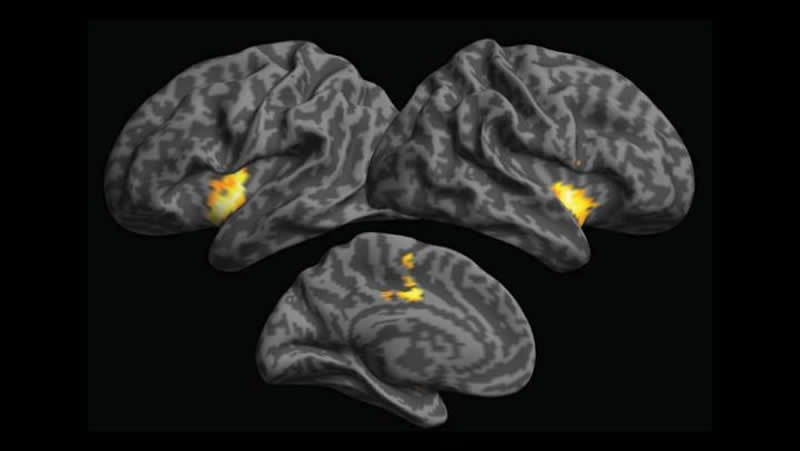Summary: Neuroimaging reveals our brains combine information from different categories of sensory information to drive abstract knowledge.
Source: SfN
What we learn through our senses drives how knowledge is sorted in our brains, according to research recently published in Journal of Neuroscience.
When we take a bite of an apple, we learn that “apples taste sweet” the same way we learn much of the information we know — through a sensory experience. The brain stores such information in groups of neurons according to broad categories, like food and places. But, how does the brain store abstract knowledge that spans multiple categories, like “Granny Smith apples come from Australia”?
Scott Fairhall employed functional magnetic resonance imaging to monitor the brain activity of healthy adults while they answered questions about words from one of three categories – food, famous people, and cities. When participants thought about the tastiness of food, a part of the brain called the insula became active. When they thought about the region the food came from, the insula plus areas involved in spatial perception activated.

The brain relies on regions involved in taste whenever we think about food, even when taste is irrelevant information. Supplementing this knowledge with information from a group of neurons storing a different category of information allows complex knowledge that spans categories — such as the origin of Granny Smith apples.
Source:
SfN
Media Contacts:
Calli McMurray – SfN
Image Source:
The image is credited to Fairhall, JNeurosci 2020.
Original Research: Closed access
“Cross Recruitment of Domain-Selective Cortical Representations Enables Flexible Semantic Knowledge”. Scott L. Fairhall.
Journal of Neuroscience doi:10.1523/JNEUROSCI.2224-19.20207.
Abstract
Cross Recruitment of Domain-Selective Cortical Representations Enables Flexible Semantic Knowledge
Knowledge about objects encompasses not only their prototypical features but also complex, atypical semantic knowledge (e.g. ‘Pizza was invented in Naples’). This fMRI study of male and female human participants combines univariate and multivariate analyses to consider the cortical representation of this more complex semantic knowledge. Using the categories of food, people and places, this study investigates whether access to spatially related geographic semantic knowledge involves: a) the same domain-selective neural representations involved in access to prototypical taste-knowledge about food; b) elicits activation of neural representations classically linked to places when this geographic knowledge is accessed about food and people. In three experiments using word stimuli, domain-relevant and atypical conceptual access for the categories food, people and places were assessed. Results uncover two principles of semantic representation: food-selective representations in the left insula continue to be recruited when prototypical taste-knowledge is task-irrelevant and under conditions of high cognitive demand; access to geographic knowledge for food and people categories involves the additional recruitment of classically place-selective parahippocampal gyrus (PPA), retrosplenial complex (RSC) and transverse occipital sulcus (TOS). These findings underscore the importance of object category in the representation of a broad range of knowledge, while showing how the cross recruitment of specialised representations may endow the considerable flexibility of our complex semantic knowledge.
Significance Statement:
We know not only stereotypical things about objects (an apple is round, graspable, edible) but can also flexibly combine typical and atypical features to form complex concepts (the metaphorical role an apple plays in Judeo-Christian belief). In this fMRI study we observe that when atypical geographic knowledge is accessed about food dishes, domain-selective sensorimotor related cortical representations continue to be recruited but that regions classically associated with place perception are additionally engaged. This interplay between categorically driven representations, linked to the object being accessed, and the flexible recruitment of semantic stores linked to the content being accessed, provides a potential mechanism for the broad representational repertoire of our semantic system.






